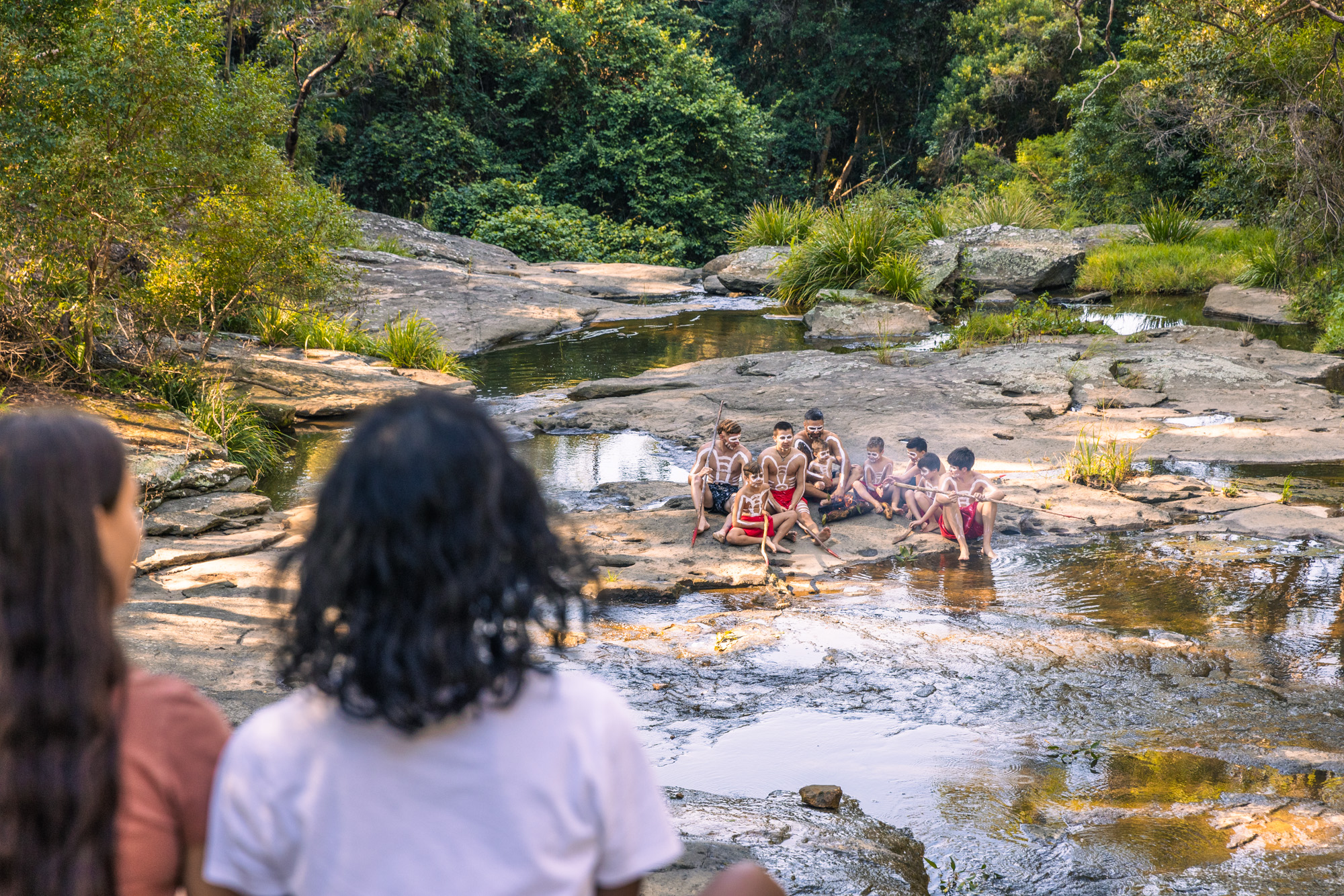Encounter Aboriginal culture on the lake
Immerse in the Aboriginal heritage of Awaba, or Lake Macquarie, by exploring how the Awabakal – the people of Awaba, made this beautiful area home for tens of thousands of year.
Gain a fresh perspective on a cultural tour
Join a Muurrung Murai guided walking tour of the Glenrock State Conservation Area to hear fascinating cultural stories of this beautiful coastal bushland from Wiradjuri and Worimi man Amos Simon. Be in turn intrigued and moved as Amos shows you numerous grinding grooves in rocks that were used to sharpen tools and weapons, living trees that were manipulated over time into distinctive shapes (possibly as boundary markers) and former campsites, among other significant sites. You’ll learn how stratified rocks from this land – known as Merewether chert – were so highly prized as sharpening stones they were traded with neighbouring and even far distant clans. Amos can collect large groups at their accommodation, or you can meet Amos at the car park at the start of the Glenrock State Conservation Area’s Yuelarbah walking track for your 90-minute tour, which also includes a yadaki/didgeridoo performance.
Draw on the knowledge of sacred sites
Most sites considered sacred by the Awabakal can’t be visited for cultural reasons, but you explore Pulbah Island Nature Reserve. The largest island on the lake is also known as Boroyiroong and is an Aboriginal Place co-managed by the NSW National Parks and Wildlife Service in consultation with the Awabakal people. Visit by boat and imagine the days when it was used for men’s business, including men’s initiations – and keep an eye out for two midden sites that pre-date European settlement.
Learn the story behind the dual names
Lake Macquarie is one of the first cities in Australia to give its cultural facilities both an Awabakal and English name. The dual naming now features on Lake Macquarie’s Museum of Art and Culture, yapang (meaning “journey or pathway”) at Booragul and the Multi-Arts Pavilion, mima (“cause to stay”) at Speers Point, as well as all library branches and Warners Bay Theatre, baramayiba (“cockle place”) and Rathmines Theatre, nawayiba (“canoe place”).
Museum of Art and Culture, yapang is also working to celebrate, promote and support emerging First Nations artists from across the country with the launch of the acquisitive yapang Emerging Art Prize – be sure to visit and see its collection of Indigenous art grow over time.

